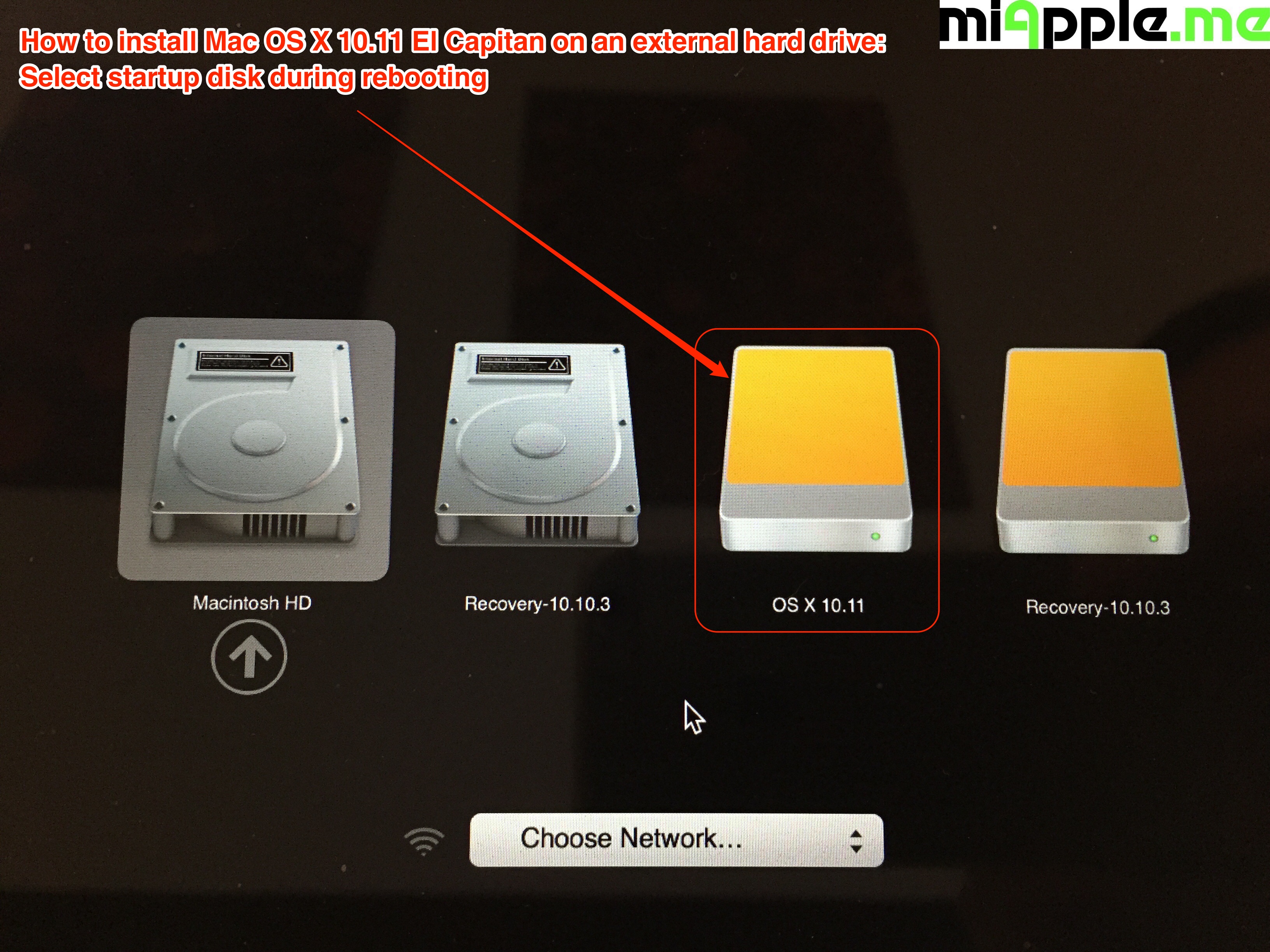Rachel is trying to sell her Mac, but…
Apple does not sell an optical media version of El Capitan. You need to use OS X Recoveryor a USB drive to re-install El Capitan, which is relatively simple to create. All you need is an 8 GB USB drive and a computer running OS X. Instructions on how to create such an installer are here: How to make a bootable OS X 10.11 El Capitan installer drive. Top 10 Ways to Clean Startup Disk on Mac OS X (El Capitan) 1. Empty out the Trash. In Mac OS X, almost every deleted file or document heads to the Trash Bin. Bypassing Trash is. Clean up your Downloads, Movies and Music folders. It's important to frequently check and clean up your download.
My friend was wiping my Mac so I could sell it and I’m pretty sure they’ve deleted the start up disk? It’s not letting me reinstall the OS on a recovery startup.
MacBook – OS X Installation USB not detected in Startup Disk selection. Boot bootable-disk macbook pro startup usb. I have a MacBook Pro 8.2. Recently I have download Sierra and Yosemite, and am currently running El Capitan. And I created a bootable USB for OS X Yosemite with DiskMaker X 6, in case Sierra goes wrong. But when I try to check. Many Mac users like to make a bootable installer drive for installing OS X El Capitan, whether for performing a clean install, or for making it easier to install OS X 10.11 onto multiple Macs. We will walk through creating a bootable install flash drive from OS X El Capitan with the final public version.
Macos El Capitan Boot Disk
This raises some red flags, as her internal 256 GB hard drive is nowhere to be found in disk utility. I booted into internet recovery and attempted to re-install OS X El Capitan, however going through the prompts I reach a dead end where it asks me to 'Select the disk where you want to install OS X'. There are no disks listed.
She wonders about a fix. There are a couple of options with an erased partition.
Because Recovery didn’t work, the fastest way to install fresh is to make or borrow a macOS installer on a USB flash drive or a disk drive. We have instructions for making a bootable installer with macOS Sierra (as well as archived versions for several previous releases). You need at least an 8GB flash drive. The article includes instructions on obtaining the installer, which might involve you having to use someone’s else Mac to download it, if you don’t have a replacement Mac on hand yet.

But if you can’t get access to another Mac or the necessary drive, it’s still possible to use a different Recovery mode on all recent Macs, dating back to 2010. Normally, you can start up a Mac while holding down Command-R to boot into what Apple now calls macOS Recovery. That allows you to run Disk Utility, reinstall or wipe and install the system, access Terminal for command-line functions, and so on. In that mode, when you choose to reinstall without erasing the drive, my recollection is that Recovery looks for the current OS system installer on your startup disk in the Applications folder, and uses that. (Apple doesn’t document that, and I haven’t had to test that for years.)
Failing finding it, Recovery downloads the currently installed version of macOS (or OS X), which is about 5GB. When complete, it installs it and reboots, and places the installer in the Applications folder.

El Capitan Download Usb

However, there’s yet another option: macOS Recovery over the Internet, which requires either a Mac model released in 2012 or later, or most 2010 and 2011 models with a firmware upgrade applied. There, the Mac reaches out over a Wi-Fi or ethernet connection to download the relatively modest Recovery software, which then bootstraps the download of the full macOS installer.
Apple says Internet-based Recovery should happen automatically on supported models, and you should see a spinning globe when that mode is invoked while the download occurs. However, if you have normal Recovery installed and it refuses to install macOS for some reason, you can manually invoke Internet Recovery.

While Command-R at startup always installs whatever the most recent version you installed on your Mac, holding down Command-Option-R brings down the very latest compatible version that can be installed. Apple also offers Shift-Command-Option-R, which installs the version of OS X or macOS with which your computer shipped, or the next oldest compatible system still available for download.
(Apple just changed this behavior with 10.12.4, but if you’re using Internet Recovery for a clean install on an erased drive, the new behavior should be active as it will be pulled from the version of Recovery that’s bootstrapped from Apple’s servers. The pre-10.12.4 option is simply Command-Option-R, but it acts like the new Shift-Command-Option-R, installing the shipped OS or the oldest compatible version.)
Apple recommends the Command-Option-R option as the only safe way to reinstall a Mac with El Capitan or earlier versions of macOS if you want to be sure your Apple ID doesn’t persist even after erasure.
Ask Mac 911
We’ve compiled a list of the questions we get asked most frequently along with answers and links to columns: read our super FAQ to see if your question is covered. If not, we’re always looking for new problems to solve! Email yours to mac911@macworld.com including screen captures as appropriate. Mac 911 can’t reply to—nor publish an answer to—every question, and we don’t provide direct troubleshooting advice.